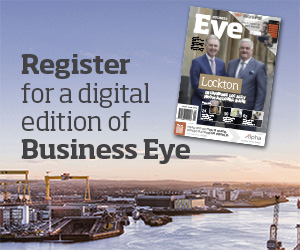Since the closure of NMRN sites the National Museum has been under extraordinary financial pressure, with a funding gap of in excess of £6 million – generated predominantly through admissions. NMRN has been working relentlessly to convey to the Westminster and Northern Irish departments the critical position it has been in, and was relieved to receive confirmation from HM Treasury this week that an emergency grant would be made available, enabling NMRN to reopen to the public.
In the case of HMS Caroline, however, the funding model is different. Whilst the ship is owned by NMRN, it is opened to the public through an Operator Agreement made with the Department for the Economy in Northern Ireland. NMRN operates the ship seeking to maximise income to cover costs, but if there is any shortfall then the DfE guarantees to pay the excess. This agreement has been in place since the ship reopened the ship in 2016 until 30 June 2020 when it expired, and means the responsibility for the operation of the ship has now fallen back to DfE.
NMRN has worked extensively with DfE to establish a new operational agreement and to recoup the significant sums in running costs since 2016 which are still owed to the Museum. However, despite the best efforts of NMRN this has not been possible and DfE has therefore chosen to mothball the ship for six months whilst they decide what to do with it.
Dominic Tweddle, Director General for the NMRN says “This is a desperate situation for the Museum and especially for our incredibly dedicated team at HMS Caroline. Since COVID-19 hit in March, our trustees and I have been working tirelessly to financially secure all of our sites. The support which was confirmed by HM Treasury this week was a welcome relief, but it does not alter our position in Belfast.”
“We have liaised exhaustively with DfE and continue to do so in the hope that we could still reopen HMS Caroline alongside our sites across the UK. We are fortunate that we have a few weeks of being able to support staff’s salaries under the Coronavirus Job Retention Scheme whilst we continue to fight to secure the future of the ship and its team. However, if we are not able to sway DfE from its current position then HMS Caroline will not reopen until 2021 and those jobs will have to be made redundant”.
HMS Caroline, a recent finalist of the 2019 Art Fund Museum of the Year, is an iconic ship and a living legend in Belfast, her home since 1924. She is also the last survivor of the Battle of Jutland in 1916, the largest naval battle ever fought. HMS Caroline opened in June 2016 creating a new, shared space in the city where, for the first time, people can discover, enjoy and discuss the complexity of the ship’s histories. From being identified with a single community the ship, through volunteering and community outreach programmes is now a site for all and an important part of Belfast’s tourist and hospitality economy.
Many UK National Museums receive 60% to over 80% of their total funding from central government. Whilst the NMRN is a National Museum, only 19% of its funding is provided by the UK Government with the remaining 81% having to be self-generated, making NMRN more akin to the Independent Museum sector, many of whom have been vocal about their dire financial vulnerability.
Reflecting on this, Dominic says “Whilst we are incredibly grateful to receive additional support from the HM Treasury, MOD and the Royal Navy and are thankful to all of those who have lobbied on our behalf, we do need to reflect on and address the circumstances which have left us in this financial position.
“Other National Museums including the Imperial War Museum, National Army Museum and Royal Air Forces Museum, are funded to a level that enables them to offer free access to their permanent collections whilst building in additional income opportunities. However, NMRN is not funded sufficiently to offer the same access, we are disproportionality dependent on the generosity of donors and our admissions income to just survive. I simply cannot see why the historic ships and collections we care for, are not treated with the same significance as those in the care of our National Museum peers. Is our naval history not of equal value?”




